| << Chapter < Page | Chapter >> Page > |
In Chapter [link] , we saw that when a pulse moves through a medium, there are two different motions: the motion of the particles of the medium and the motion of the pulse. These two motions are at right angles to each other when the pulse is transverse. Since a transverse wave is a series of transverse pulses, the particle in the medium and the wave move in exactly the same way as for the pulse.
When a transverse wave moves horizontally through the medium, the particles in the medium only move up and down. We can see this in the figure below, which shows the motion of a single particle as a transverse wave moves through the medium.
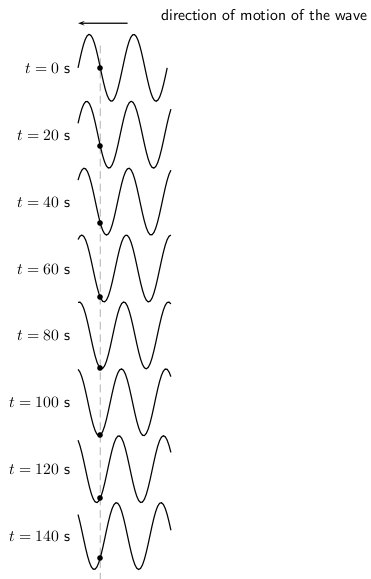
As in [link] , we can draw a graph of the particles' position as a function of time. For the wave shown in the above figure, we can draw the graph shown below.
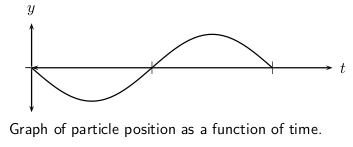
The graph of the particle's velocity as a function of time is obtained by taking the gradient of the position vs. time graph. The graph of velocity vs. time for the position vs. time graph above, is shown in the graph below.
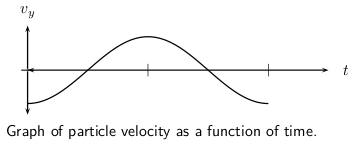
The graph of the particle's acceleration as a function of time is obtained by taking the gradient of the velocity vs. time graph. The graph of acceleration vs. time for the position vs. time graph shown above, is shown below.
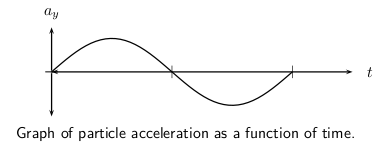
As for motion in one dimension, these graphs can be used to describe the motion of the particle in the medium. This is illustrated in the worked examples below.
The following graph shows the position of a particle of a wave as a function of time.
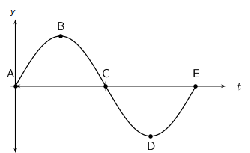
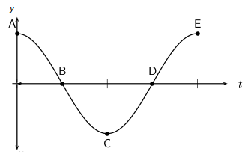
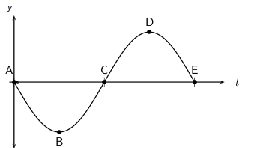
If you look carefully at the pictures of waves you will notice that they look very much like sine or cosine functions. This is correct. Waves can be described by trigonometric functions that are functions of time or of position.Depending on which case we are dealing with the function will be a function of or . For example, a function of position would be:
where is the amplitude, the wavelength and is a phase shift . The phase shift accounts for the fact that the wave at does not start at the equilibrium position. A function of time would be:
where is the period of the wave. Descriptions of the wave incorporate the amplitude, wavelength, frequency or period and a phase shift.
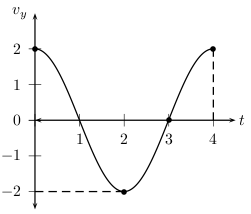

Notification Switch
Would you like to follow the 'Siyavula textbooks: grade 10 physical science' conversation and receive update notifications?